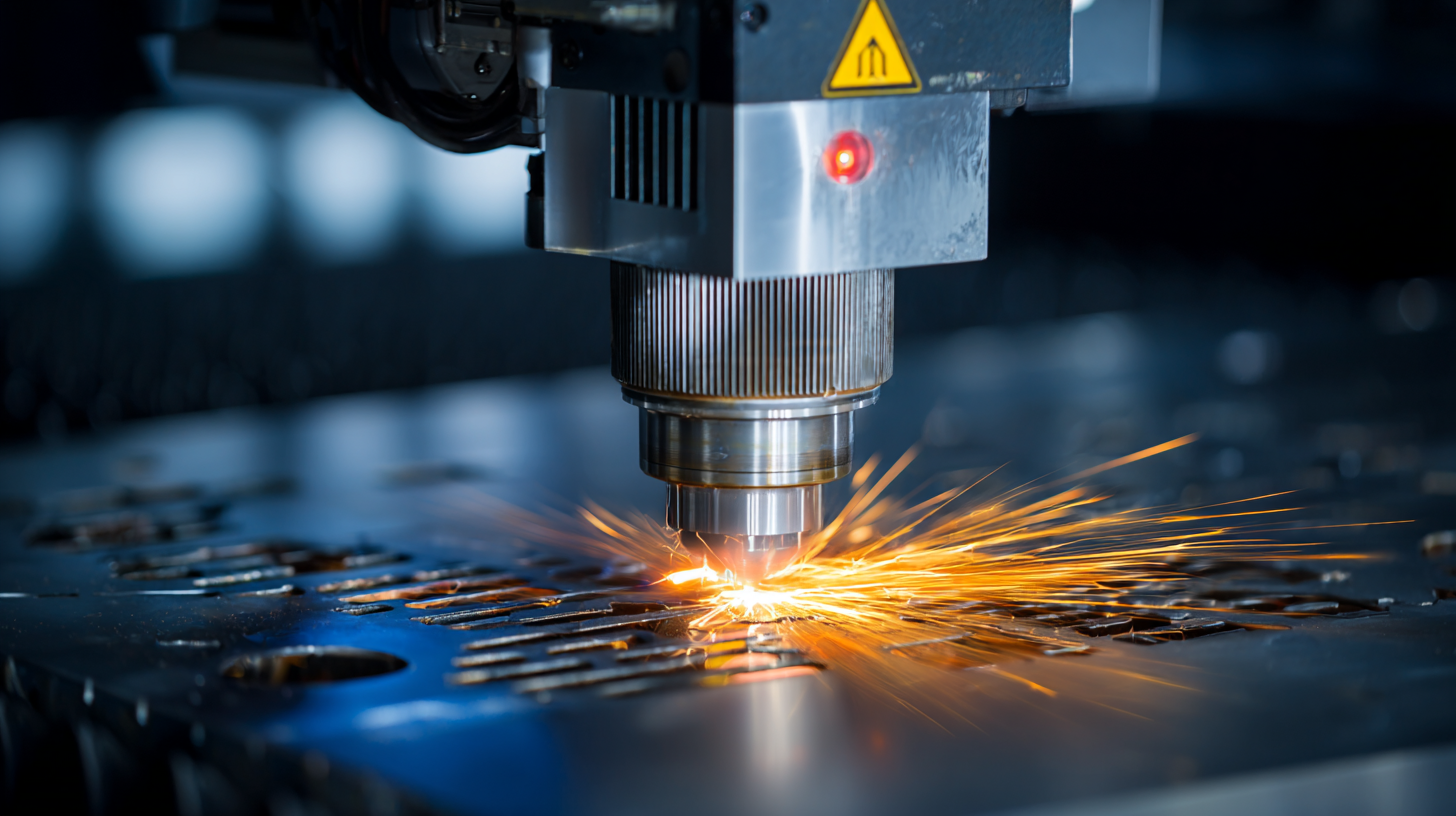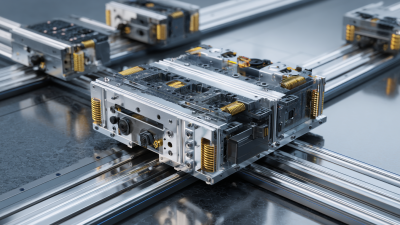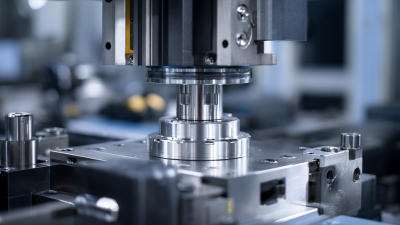How to Choose the Right Fiber Laser Machine for Maximum Efficiency and Precision
In recent years, the adoption of fiber laser machines has significantly transformed the manufacturing landscape, providing unprecedented levels of precision and efficiency in various industrial applications. According to a report by Markets and Markets, the global fiber laser market is projected to reach USD 5.66 billion by 2025, growing at a CAGR of 11.2% from 2020. This remarkable growth underscores the increasing importance of fiber laser technology in sectors such as automotive, aerospace, and electronics.
Choosing the right fiber laser machine is paramount for businesses aiming to enhance productivity and maintain competitive advantages. These machines can offer superior cutting speeds, reduced operational costs, and improved energy efficiency compared to traditional laser systems. Moreover, a study published by Technavio highlights that nearly 50% of manufacturers are looking to invest in fiber laser systems to optimize their production processes, driven by the need for high-quality results and quick turnaround times.
As industries evolve, understanding the critical factors in selecting a fiber laser machine—such as power, wavelength, and materials compatibility—will be essential. This guide aims to provide insights into how businesses can leverage fiber laser technology for maximum operational efficiency and precision, aligning with the rapidly advancing demands of the market.

Understanding Your Specific Cutting Needs and Applications
 When selecting a fiber laser machine, understanding your specific cutting needs and applications is crucial for achieving maximum efficiency and precision. Consider the materials you plan to process—different machines are optimized for various substrates such as steel, aluminum, and plastics. For example, if your primary focus is on thicker metals, a machine with a higher wattage will provide the necessary power to cut through those materials effectively. Conversely, if you work with thin sheets or intricate designs, a machine with a fine-tuned beam delivery system will ensure clean cuts and reduced kerf.
When selecting a fiber laser machine, understanding your specific cutting needs and applications is crucial for achieving maximum efficiency and precision. Consider the materials you plan to process—different machines are optimized for various substrates such as steel, aluminum, and plastics. For example, if your primary focus is on thicker metals, a machine with a higher wattage will provide the necessary power to cut through those materials effectively. Conversely, if you work with thin sheets or intricate designs, a machine with a fine-tuned beam delivery system will ensure clean cuts and reduced kerf.
Besides material type, the complexity of your projects informs your choice of fiber laser machine. If your applications require detailed and precise shapes, look for machines equipped with advanced motion systems and control software that can accommodate complex cutting patterns. Additionally, consider the speed and efficiency of the machine, as this will directly impact your production capabilities. Evaluate the cutting speed, duty cycle, and maintenance requirements to ensure that the chosen machine aligns with your operational goals and maximizes productivity without compromising on quality.
Evaluating Laser Power and Wavelength for Optimal Performance
When choosing the right fiber laser machine, evaluating laser power and wavelength is crucial for achieving optimal performance. The power of the laser determines its cutting speed and the thickness of the materials it can process. Higher wattage enables the machine to cut through thicker materials more quickly, making it ideal for commercial applications where efficiency is paramount. However, excessive power can lead to undesirable heat effects and material distortion, so it's essential to strike a balance based on the specific materials and applications involved.
Wavelength plays a significant role in how well the laser interacts with different materials. Fiber lasers typically operate at a wavelength of 1064 nm, which is particularly effective for metals due to its strong absorption characteristics. However, for non-metal materials, such as plastics or ceramics, other wavelengths may be beneficial to enhance cutting quality and precision. Understanding the material's characteristics and the desired application ensures that the selected fiber laser machine offers both efficiency and high-quality results, tailoring the system to meet specific operational needs.
Comparing Different Fiber Laser Machine Brands and Models
When selecting a fiber laser machine for optimal efficiency and precision, it’s essential to compare different brands and models to find the best fit for your specific needs. Recent industry studies indicate that laser cutting applications can achieve efficiency increases of up to 30% with advanced fiber laser technology compared to traditional methods. Brands such as Model A and Model B both offer robust options, but their strengths cater to different operational priorities. For example, Model A is known for its speed and reliability in high-volume production settings, while Model B excels in precision cutting for intricate designs.
Another critical factor to consider is the overall cost of ownership versus performance. According to reports, low-maintenance fiber laser machines can result in a reduction of operational costs by approximately 20% over five years. Evaluating specifications such as power output, cutting speed, and ease of use across various models is crucial. The latest iterations of these machines have introduced features that allow for better energy management and more precise cutting capabilities, making it imperative to weigh these benefits against initial investment costs to determine which machine aligns best with your operational goals.
Assessing Space, Budget, and Maintenance Requirements
When selecting the right fiber laser machine, assessing space, budget, and maintenance requirements is crucial for optimizing efficiency and precision. According to a report by MarketsandMarkets, the global fiber laser market is expected to reach $6.13 billion by 2023, driven by the increasing demand for high-quality cutting and engraving. Businesses need to consider the physical dimensions of the machine to ensure it fits within their production environments. A compact design can often lead to better workflow and productivity, especially in facilities with limited space.
Budget considerations are equally important. A survey by IBISWorld reported that the average cost of a high-quality fiber laser machine ranges from $30,000 to $500,000, depending on the specifications and capabilities. Investing in a machine that aligns with your budget while providing long-term value is essential. Additionally, maintenance requirements should not be overlooked; regular upkeep can determine the machine's lifespan and operational efficiency. Data from the Laser Institute of America suggests that routine maintenance can reduce downtime by up to 25%, enhancing overall production reliability. Understanding these factors will help businesses select a fiber laser machine that suits their specific needs and maximizes their return on investment.
How to Choose the Right Fiber Laser Machine for Maximum Efficiency and Precision
| Feature |
Option A |
Option B |
Option C |
| Power Output |
500W |
1000W |
2000W |
| Cutting Area |
300 x 150 mm |
600 x 300 mm |
1200 x 1500 mm |
| Maintenance Frequency |
Monthly |
Quarterly |
Yearly |
| Budget Range |
$10,000 - $15,000 |
$15,000 - $25,000 |
$25,000 - $40,000 |
| Suitability for Materials |
Metal Only |
Metal and Plastics |
Metal, Plastics, and Composites |
Exploring Advanced Features for Enhanced Precision and Control
When selecting a fiber laser machine, advanced features play a crucial role in achieving enhanced precision and control. According to a report by MarketsandMarkets, the fiber laser market is expected to reach USD 4.38 billion by 2025, indicating a growing emphasis on technology that elevates manufacturing efficiency. Key features to consider include variable beam quality, dynamic focus control, and advanced pulse modulation, which can significantly improve cutting accuracy and edge quality.
Tip: Prioritize machines with customizable settings that allow for fine-tuning of laser parameters specific to your materials. This adaptability can lead to a reduction in waste materials and increase production rates, essential for competitive businesses.
Additionally, integrated software solutions that offer real-time monitoring and adjustment capabilities can further enhance operational precision. A study by IBISWorld suggests that companies utilizing smart laser cutting systems report a 20% increase in productivity. By investing in machinery with these advanced functionalities, manufacturers can ensure maximum performance and longevity of their equipment.
Tip: Look for machines that feature user-friendly interfaces for easier operation and maintenance, which can reduce downtime and training costs.

 When selecting a fiber laser machine, understanding your specific cutting needs and applications is crucial for achieving
When selecting a fiber laser machine, understanding your specific cutting needs and applications is crucial for achieving 





